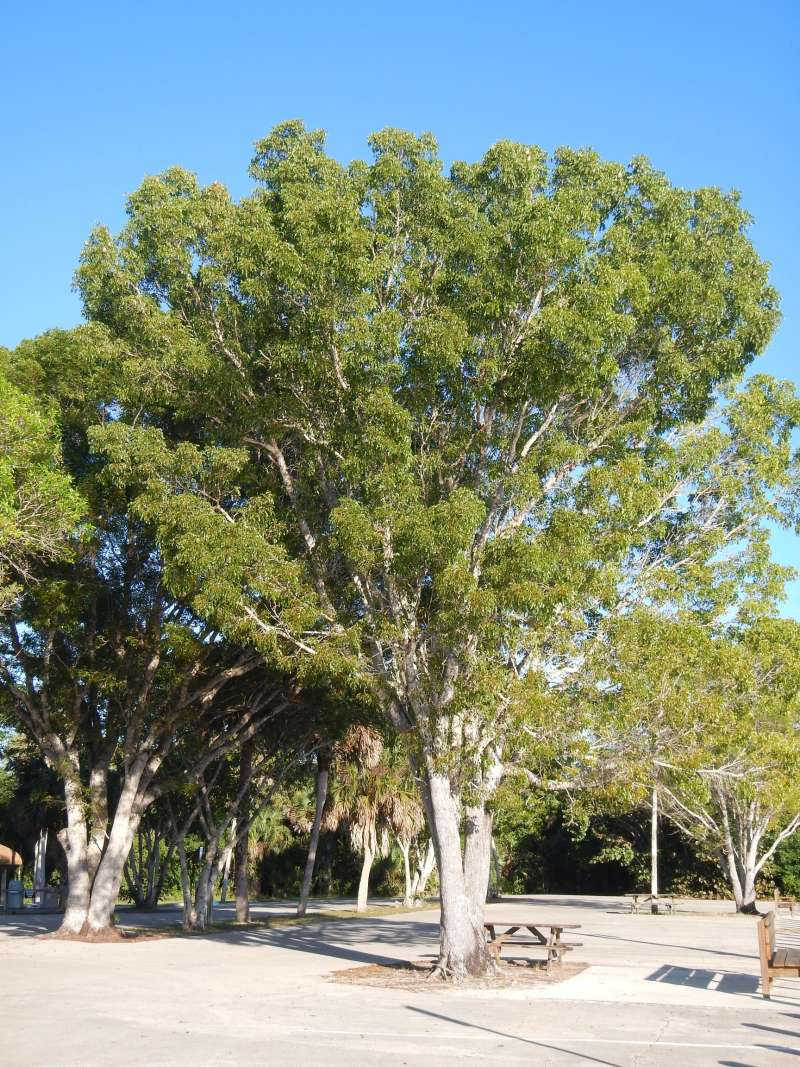SPECIES INFO
West Indies Mahogany (Swietenia mahagoni) is occasionally found in extreme southern Florida and south into the Caribbean. In Florida this is found only in Broward, Dade, and Monroe Counties. This species is typically found on coastal hammocks. This species is considered threatened in Florida.
This large tree can reach 50-60 feet in height. The leaves are pinnately compound with entire margins on the 4 to 8 leaflets. The leaflets are 2-3 inches in length. The small greenish-yellow flowers with 5 petals are in panicles. The ovoid fruits can be up to 4 inches long. The valuable wood is used in furniture and on yachts.Mahogany (Meliaceae) family is found in the extreme southern United States from Florida to California and south through all of Central America, and all of tropical South America. The family is also found in central and southern Africa and then east in a band to India, SE Asia, and China and south through Malaysia to Indonesia and New Guinea and further south to northern Australia. The family contains approximately 575 species arranged into about 50 different genera. There were ten species in six different genera growing in greater North America as of 1994.
Geranium Order (Geraniales) is a large order composed of many different families. Included here are the Geranium, Oxalis, and Citrus groups.
Dicots (Dicotyledoneae Class) are the predominant group of vascular plants on earth. With the exception of the grasses (Monocots) and the Conifers (Gymnosperms), most of the larger plants that one encounters are Dicots. Dicots are characterized by having a seed with two outer shell coverings.
Some of the more primitive Dicots are the typical hardwood trees (oaks, birches, hickories, etc). The more advanced Dicots include many of the Composite (Aster) Family flowers like the Dandelion, Aster, Thistles, and Sunflowers. Although many Monocots reach a very high degree of specialization, most botanists feel that the Dicots represent the most advanced group of plants.
Seed plants (Phylum Embryophyta) are generally grouped into one large phylum containing three major classes: the Gymnosperms, the Monocots, and the Dicots. (Some scientists separate the Gymnosperms into a separate phylum and refer to the remaining plants as flowering plants or Angiospermae.)
For North American counts of the number of species in each genus and family, the primary reference has been John T. Kartesz, author of A Synonymized Checklist of the Vascular Flora of the United States, Canada, and Greenland (1994). The geographical scope of his lists include, as part of greater North America, Hawaii, Alaska, Greenland, Puerto Rico, and the Virgin Islands.
Kartesz lists 21,757 species of vascular plants comprising the ferns, gymnosperms and flowering plants as being found in greater North America (including Alaska, Hawaii, Greenland, Puerto Rico and the Virgin Islands.
There are estimates within the scientific world that about half of the listed North American seed plants were originally native with the balance being comprised of Eurasian and tropical plants that have become established.
Plant kingdom contains a large variety of different organisms including mosses, ferns, and seed plants. Most plants manufacture their energy from sunlight and water. Identification of many species is difficult in that most individual plants have characteristics that have variables based on soil moisture, soil chemistry, and sunlight.
Because of the difficulty in learning and identifying different plant groups, specialists have emerged that study only a limited group of plants. These specialists revise the taxonomy and give us detailed descriptions and ranges of the various species. Their results are published in technical journals and written with highly specialized words that apply to a specific group.
On the other hand, there are the nature publishers. These people and companies undertake the challenging task of trying to provide easy to use pictures and descriptions to identify those species.






